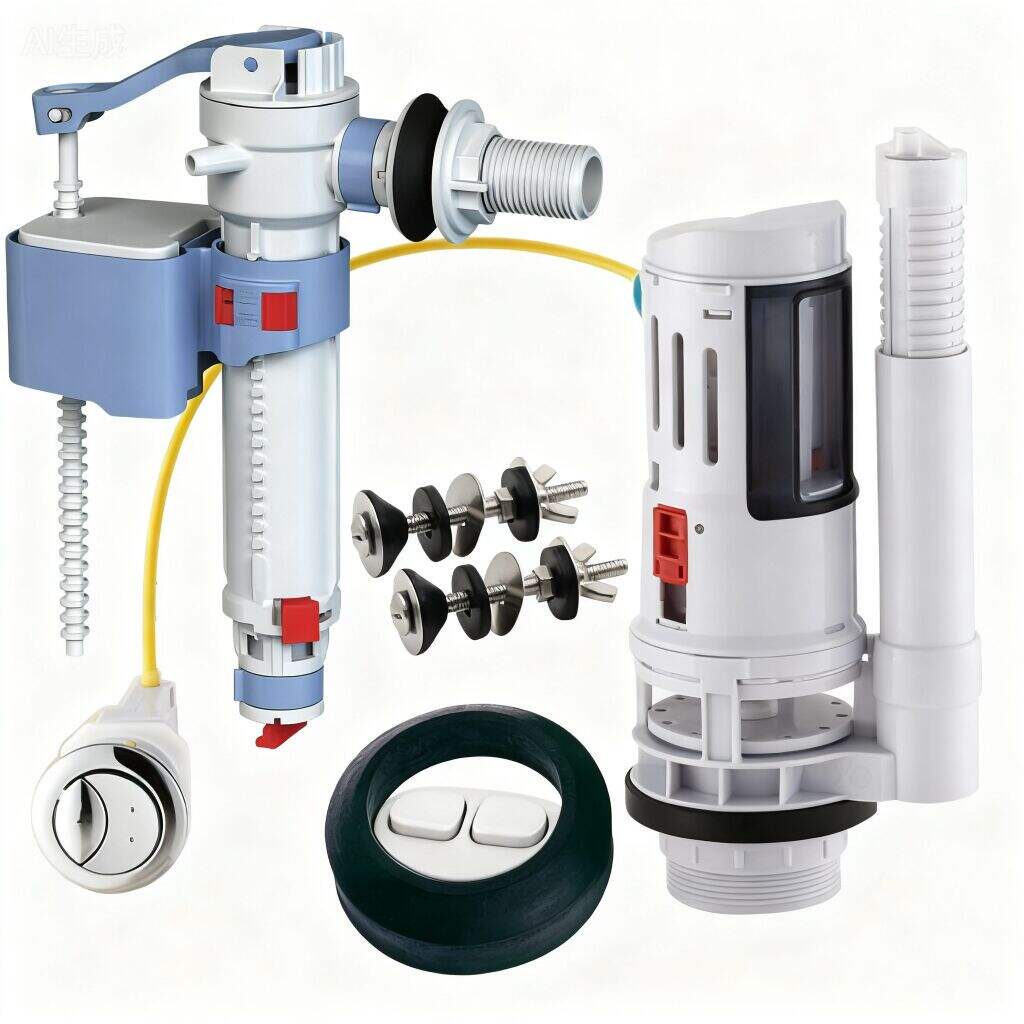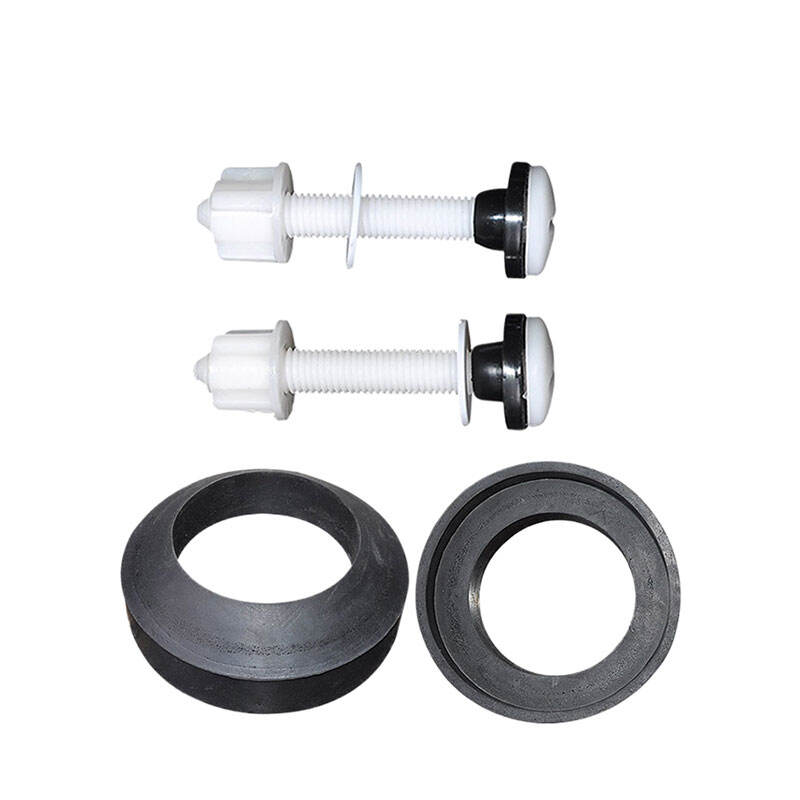Understanding the Demand for Custom Toilet Tank Fittings in B2B Plumbing Supply
Why Specialized Toilet Tank Fittings Are Increasingly in Demand
These days commercial plumbing systems really need things to fit together properly because building regulations keep getting stricter while fixtures come in all sorts of different shapes and sizes. Low flow toilets are becoming much more common these days too. We're talking about saving around 13 thousand gallons each year just from one toilet alone. Plus there's the whole ADA compliance thing going on which affects how installations must be done. All this has led to about a 22 percent jump in requests for specially made toilet tank parts since early 2022 according to industry data. Contractors are finding they need all sorts of special parts now, stuff like adjustable flush valves and those offset flanges that help when retrofitting tight spaces. The latest Bath Design Survey backs this up, showing that plumbers across the country are dealing with exactly these kinds of challenges day after day.
Common Inventory Challenges with Low Volume Plumbing Components
The situation distributors find themselves in is pretty tough on their bottom line. When they stock all those fittings nobody really needs most of the time, they end up with products gathering dust in warehouses. According to research from the Ponemon Institute last year, this kind of inventory can lead to losses around 34%. On the flip side, if they don't keep those specialty parts available, technicians end up waiting days just to fix something simple, costing companies over eight hundred dollars each day lost. Take those slow moving items like the 3 inch to 2 inch reducers or those tricky low heel vents elbow pieces. These things actually require about 18 percent more cash upfront compared to regular fittings, but believe it or not, plumbers still need them when pipes burst at 2am during freezing weather.
How Customization Improves Fit, Function, and Customer Satisfaction
With parametric CAD systems in place, manufacturers can get those custom toilet tank fittings out the door within about 12 to 15 business days. This cuts down on inventory headaches for distributors who no longer have to keep dozens of different flange versions on hand. Take one supplier from the Midwest region for example they slashed their return rate by almost half after starting to make solvent welded trap assemblies that actually match local plumbing codes. Contractors are also seeing benefits in the field these days, reporting roughly a quarter fewer callbacks when they install those specially made offset flanges in cramped bathroom spaces where standard fittings just won't fit right.
Integrating Just in Time Inventory with Custom Procurement Models
How JIT Practices Reduce Overstock and Waste for Toilet Tank Fittings
The just-in-time inventory approach has changed how plumbing supply companies handle toilet tank fittings. Instead of stockpiling parts nobody wants, they make these components only when customers actually need them. This system cuts down on warehouse costs significantly, maybe around 30% according to some industry reports, and keeps old inventory from taking up space. Most suppliers no longer buy huge quantities of those specialty washers and valves that just collect dust in storage. The money saved can then be reinvested into items people are actually buying right now, which makes better business sense overall.
Aligning Custom Production Cycles with Real-Time Demand Signals
The latest procurement platforms are now pulling real-time usage data from commercial buildings through IoT sensors. When these sensors detect certain activity levels, they automatically signal manufacturers to produce small batches of toilet tank fittings. This just-in-time manufacturing model works really well with modern plumbing systems because it eliminates the need for old stock that sits around gathering dust. We're talking about serious savings here too. Mid sized distributors typically waste around $740,000 every year on excess inventory according to Ponemon's research back in 2023. Instead of keeping warehouses full of parts that might never get used, companies can respond precisely to actual demand as it happens.
Case Study: Regional Distributor Cuts Inventory Waste by 37% Using JIT and Customization
A plumbing supply house in Kansas City cut down on too much inventory sitting around by teaming up with makers who can get custom toilet tank fittings made within just 15 days. When they started matching what gets produced to actual repair needs reported back from their field crews, they were able to dramatically reduce the amount of safety stock they kept for those weird parts nobody buys often, like those special flush valves that only fit older models. Now they've got these live dashboards showing exactly how each part is selling across all their 200 plus contractor accounts. This lets them order just what's needed when it's needed, so even though they have about 40% less stuff stored in their warehouses, their customers still get what they want over 98% of the time.
Demand Forecasting and Strategic Inventory Planning for Slow-Moving Parts
Using Historical Data to Predict Demand for Specialized Toilet Tank Fittings
When distributors look at sales history spanning three years or longer, they tend to cut down on forecasting mistakes by around 28% when dealing with those tricky slow movers like toilet tank parts. The trick is mixing together how often repairs happen with what seasons bring in terms of demand changes. Take summer months for example, when lots of businesses decide to redo their restrooms. Smart companies create these special forecasting models that weigh different factors against each other. One wholesaler based somewhere in the Midwest saw their inventory fill rates jump 19 points once they started connecting HVAC system updates with the need for new toilet valves through some kind of advanced analysis techniques.
Categorizing Inventory by Repair Frequency and Compatibility Needs
Strategic planners use ABC-XYZ matrixes to prioritize toilet tank fittings:
- High Criticality/Low Turnover: Proprietary flush valve seals (stock 6-month safety supply)
- Medium Criticality/Seasonal Demand: Universal fill valve kits (align orders with contractor project cycles)
- Low Criticality/High Compatibility: Washers and gaskets (JIT replenishment)
This method helped a regional distributor reduce dead stock by 33% while maintaining 98% service level targets.
Avoiding Overstock While Ensuring Availability of Critical Low-Turnover Parts
Smart suppliers these days are moving away from static safety stock calculations. Instead they're using formulas that change each month depending on factors like unpredictable lead times from smaller manufacturers, current warranty claims data, and even building permits information from different regions. Recent research in supply chain management shows companies adopting this method save around $7.20 per product every year while still keeping shelves stocked. This matters a lot for items such as those special pressure tank connectors which typically take about nine months to move through inventory. The savings add up over time without risking stockouts during peak demand periods.




